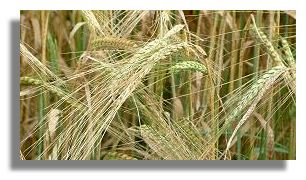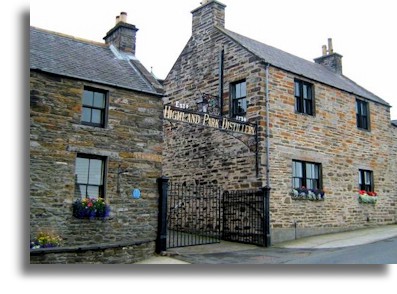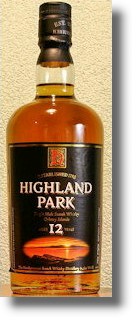

Whisky Connoisseur
Arthur J A Bell
"Magic Golden Moments"


Whisky Connoisseur
Arthur J A Bell
"Magic Golden Moments"
Let me tell you about one of the magic golden moments of my life. It was midsummer night, and it was midnight.
I was on a trip to Orkney staying opposite the 16th century Bishop's Palace with two retired doctor friends. We drove out to the ring of Brodgar, that incredibly awesome Bronze Age stone circle 120 yards in diameter (see graphic above). In that mysterious setting twenty years ago with the daylight still hesitatingly with us, Ernest (a retired pathologist) produced a little hip flask: "Take some of this medicine my boy - it will put a sparkle in your eyes." It did! I had discovered one of the wonders of the world - cask strength Highland Park malt whisky. It may be a cliché - But; nothing has been the same ever since.
East of Skara Brae, and one mile South West of Brodgar, sits a massive chambered tomb of the Neolithic period at Unstan (picture on the right by John Allan). Here is evidence that these prehistoric people carved flints, hunted deer and seabirds, caught fish, domesticated cattle, sheep, goats, and pigs - And grew barley. The second critical element in Orkney's magical brew.
So two of the elements, fire and earth were in play in prehistoric times. How about the third, water? My minister father' spent eighteen, months (including two fierce winters) under canvas in 1940 and 1941 in Orkney. One did not dare ask him about the climatic conditions of those Northern Isles - unless one wanted a less than dignified clerical observation on "Bloody Orkney". It was his assertion that it had rained "far longer than forty days and forty nights". Indeed, he often observed that, had Noah been in Orkney in the winter of 1940, he wouldn't have managed to build his ark "because it never stopped raining, and there's no bloody trees anyway". Drought, and hose pipe bans, you see, are not a problem in Orkney. Water. the essential third element for whisky is in abundance. Fire, Earth and Water come together.
Who first drew water from Cattie Maggie's spring and started (illicitly) distilling? Allegedly the first serious "smuggler" - as all distillers were known - was one Magnus Eunson. He is credited with the first distilling on the site of Highland Park in the 18th Century. And he was far from being a typical perpetrator of illegal acts he was a minister! The first in what was to be a line of clerics involved in production of this masterpiece of the distiller's art - that was to stretch on for over a century.
Anyway, Eunsen always kept a number of kegs of whisky under his pulpit. One wonders indeed if, like the Chancellor of the Exchequer, he actually enjoyed a snifter when delivering his message! One Sabbath, Eunson learned there was to be an excise raid - and the kegs were taken next door to the Manse. Here they were draped with a white linen cloth, and a coffin lid set on to. Kneeling in prayer with his followers, Eunson, his Bible and psalm book in hand, apparently wailed wildly as the customs men approached. As they entered the room full of "mourners" one indicated to the officers that the dear departed had been taken off with "the small pox" - and quicker than you can down a dram - the excise men vanished!
Now that the nectar was being produced, the distillery changed hands, and became the property of the Borthwick family. Robert was succeeded by his son George, and then in 1869 by his grandson the Reverend James Borthwick. Not to be outdone by the Presbyterians, the Roman Catholic Bishop of Aberdeen, the Right Reverend Aeneas Chisholm became a trustee! One just wonders how these divines coped with the angels share" that 3% of malt whisky that annually evaporates heavenward. Indeed, one is tempted to believe that they regularly took as their text from St. Paul's letter to the Ephesians "Be not drunk with wine, wherein is excess; but be filled with the spirit."
Inside the distillery only a shining stainless steel mash tub lets us know that we are coming to the end of the twentieth century. The warehouses are earth floored, the washbacks are wooden, and the wonderful onion shaped copper stills are low set into the floor. For well over a century its products has been a favourite of the best of blenders - bringing a quality and subtlety to their whiskies.
Its supreme excellence was recognized by the founder of the Union Castle shipping line in 1883. Sir Donald Currie, writing about the maiden voyage of his ship the "Pembroke Castle" wrote: "a supply of old Highland Park was at once sent on board....At Copenhagen where the vessel called after leaving Kirkwall, the King of Denmark, the Emperor of Russia, and a very distinguished party were entertained on board. The Highland Park was procured and pronounced by all to be the finest they had ever tasted.
Orkney is probably the richest area for archaeological sites in the United Kingdom. From the best stone age housing in Europe thought to the first Cathedral in Britain it is living and breathing history. Highland Park Distillery has some very rare whisky which accompanies this history.
Graphics above have been sourced via Wikimedia.
Where else would you like to go in Scotland?

Ring of Brodgar, Orkney
Photo via Wikimedia
 Now can I take you back two-millennia before the Beaker people and their massive construction at Brodgar. Six miles west to the windy Bay of Skail. Here at Skara Brae stone age man, who we mistakenly think of as some animal like creature going "Ugg.! Ugg!", had constructed a sophisticated stone housing complex complete with its own complex of drainage and sewage. AND, the first evidence of peat fires - that essential; element of uisge beatha!
Now can I take you back two-millennia before the Beaker people and their massive construction at Brodgar. Six miles west to the windy Bay of Skail. Here at Skara Brae stone age man, who we mistakenly think of as some animal like creature going "Ugg.! Ugg!", had constructed a sophisticated stone housing complex complete with its own complex of drainage and sewage. AND, the first evidence of peat fires - that essential; element of uisge beatha!
 We suspect that neither Neolithic nor Bronze Age Orkney men discovered the white magic whereby these three elements were combined. The barley from the earth, fired over peat and malted, then mixed with water and distilled. We believe that the great spiritual manifestation was first developed by 3rd or 4th C. Celtic monks and Orkney is itself, a great ecclesiastical centre, Thorfinn, the Earl of Orkney and his half-brother MacBeth (that man much libelled by an English playwright) may have started building the great Viking cathedral in Kirkwall - the "capital" of Orkney.
We suspect that neither Neolithic nor Bronze Age Orkney men discovered the white magic whereby these three elements were combined. The barley from the earth, fired over peat and malted, then mixed with water and distilled. We believe that the great spiritual manifestation was first developed by 3rd or 4th C. Celtic monks and Orkney is itself, a great ecclesiastical centre, Thorfinn, the Earl of Orkney and his half-brother MacBeth (that man much libelled by an English playwright) may have started building the great Viking cathedral in Kirkwall - the "capital" of Orkney.
 So let me take you on now to the year 1788, one year before the storming of the Bastille in Paris. One Kirkwall resident, Mr. David Robertson, started to build a distillery on this site. It was to become the most Northerly in the British Isles by half a mile. This was some thirty-six years before Mr. George Smith was granted the first licence to distil at Glenlivet The grey stone that built what became known as Highland Park was from the nearby Walliwall Quarry. This quarry then became flooded with a hard water from local springs, and is held as the reservoir for the distillery. As the distillery (picture on the right by Tine @ wikivoyage shared is from Wikimedia) is above the reservoir, the water had to be pumped uphill.
So let me take you on now to the year 1788, one year before the storming of the Bastille in Paris. One Kirkwall resident, Mr. David Robertson, started to build a distillery on this site. It was to become the most Northerly in the British Isles by half a mile. This was some thirty-six years before Mr. George Smith was granted the first licence to distil at Glenlivet The grey stone that built what became known as Highland Park was from the nearby Walliwall Quarry. This quarry then became flooded with a hard water from local springs, and is held as the reservoir for the distillery. As the distillery (picture on the right by Tine @ wikivoyage shared is from Wikimedia) is above the reservoir, the water had to be pumped uphill.
 The church connection with Highland Park ceased officially in 1895. It then passed into the hands of the family of James Grant where it remained until 1937. At this point the present owners, Highland Distillers, purchase it. The imposing wrought iron arch to the gates, entering the hallowed ground of the distillery still tell us that "James Grant and Coy. (Highland Park Distillery) Ltd. Are "Licensed Distillers". So there!
The church connection with Highland Park ceased officially in 1895. It then passed into the hands of the family of James Grant where it remained until 1937. At this point the present owners, Highland Distillers, purchase it. The imposing wrought iron arch to the gates, entering the hallowed ground of the distillery still tell us that "James Grant and Coy. (Highland Park Distillery) Ltd. Are "Licensed Distillers". So there!
Return to Index of articles on Whisky by the Whisky Connoisseur, Arthur J A Bell

